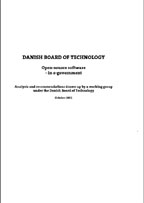Knowledge Zone - Reports
Open Source Software in Schools
Numerous reports on the use of Open Source Software in an Educational Environment are available on the Schoolforge Website:
BECTA REPORT - 13 May 2005
A project report evaluating the use of open source software (OSS) within a small number of schools was published on Friday, 13 May 2005 by Becta (British Educational Communications and Technology Agency).
The project report from the study "Open Source Software in Schools: A study of the spectrum of use and related ICT infrastructure costs" demonstrates that although the implementation of OSS in schools needs careful planning and support, the use of OSS can offer a cost-effective alternative to proprietary software.
Access the reports from the BECTA website:
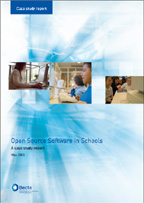
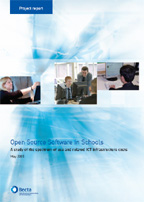
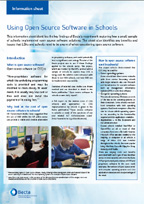
Open Source Software in Schools: A study of the spectrum of use and related ICT infrastructure costs - Project report (PDF 704KB)
Open Source Software in Schools: A case study report (PDF 225KB)
Using Open Source Software in Schools: Information sheet (PDF 294KB)
Open Source Software in Local Government
The Open Source Academy provides a number of excellent resources for the implementation of Open Source Software.
Open Source Software in Central Government
Australian Government - A Guide to Open Source Software for Australian Government Agencies. (April 2005)
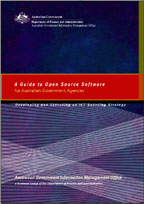
The increasing maturity of open source software and open source platforms
offers significant potential benefits to the Australian Government and the wider
community. Open source software development,using open standards,can
support greater interoperability between systems and enable system sharing. It
can offer original solutions to problems not addressed by proprietary software
and it has the potential to lead to significant savings in Government expenditure
on information and communications technology (ICT).
Open source software is already in wide use within Australian Government
agencies,and is particularly well established in ICT infrastructure support and
management systems.Open source solutions are being offered by a variety of
vendors ranging from small to medium-sized Australian companies to large multi-nationals.There is a growing market for companies that implement and support
open source solutions in business and government.
Many agencies are now looking to explore the possible wider application of open source
software within their ICT systems.Under the Australian Government ’s procurement
framework,“value for money ” is the key criterion against which competing fit for purpose
solutions should be assessed.All solutions -open source or proprietary -which can meet an agency ’s functional specifications should be considered by an agency when it is undertaking software procurement.However the different nature of open source software
can make such assessments,and comparisons between different solutions,difficult.
This Guide seeks to assist agencies by providing practical information and approaches for
agencies to consider when assessing open source solutions.Risk management procedures
and the different contractual considerations that can apply to open source software
issues are addressed in the Guide,as are cost of ownership issues.Understanding cost of
ownership issues for open source software is important because,under an open source
model,costs are incurred at different phases of the implementation and operation of an
information technology system.
The Guide is a companion document to the 2004 publication A Guide to ICT Sourcing. Between them these publications provide a basis for better ICT procurement decisions across the whole of the Australian Government.
Danish Board of Technology - Open-source software in e-government (October 2002)
The Danish Board of Technology decided in 2001 to
have a more detailed analysis made of the usability
of open-source software in public administration,
including the economic perspectives in a change-over
to open-source software.
This report presents the results of this work. It
contains an economic analysis of open-source
software and additionally analyses its usability.
The report also makes a number of recommendations on how the public sector can promote the use of open-source software.
The report has been drawn up by an interdisciplinary working group under the Danish Board of Technology. A number of people who
together have special knowledge in the area and the necessary economic expertise were chosen as
members of the working group.
